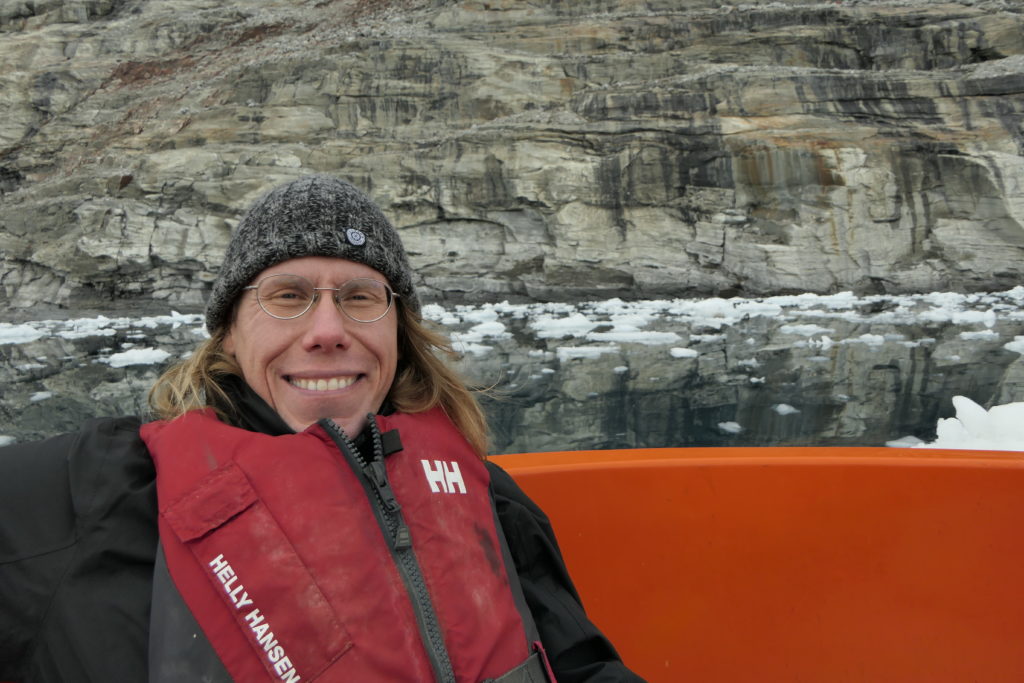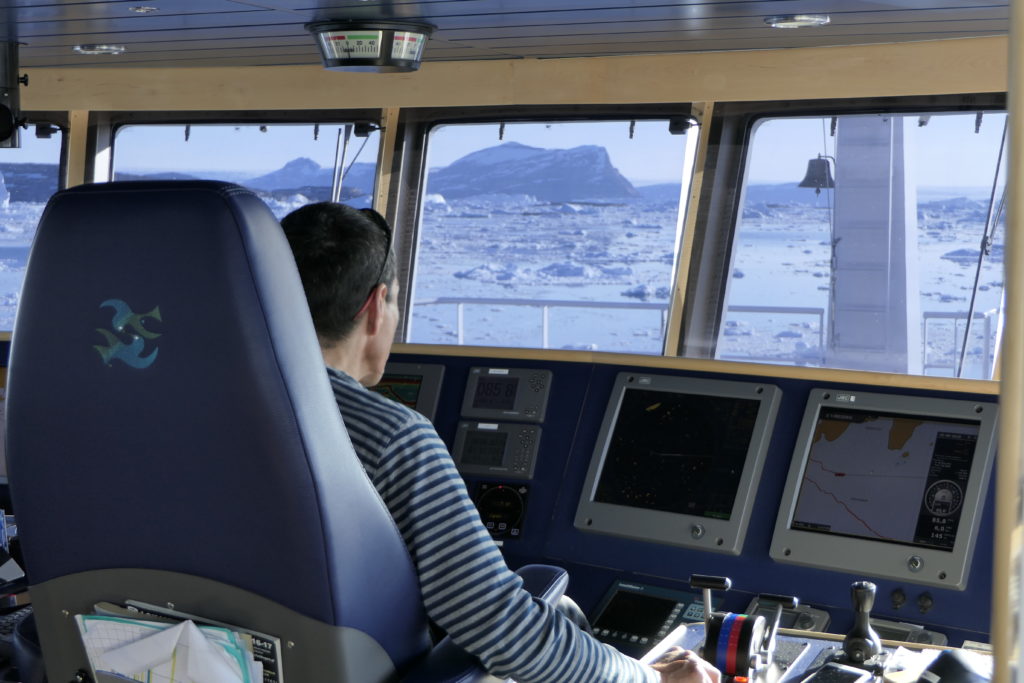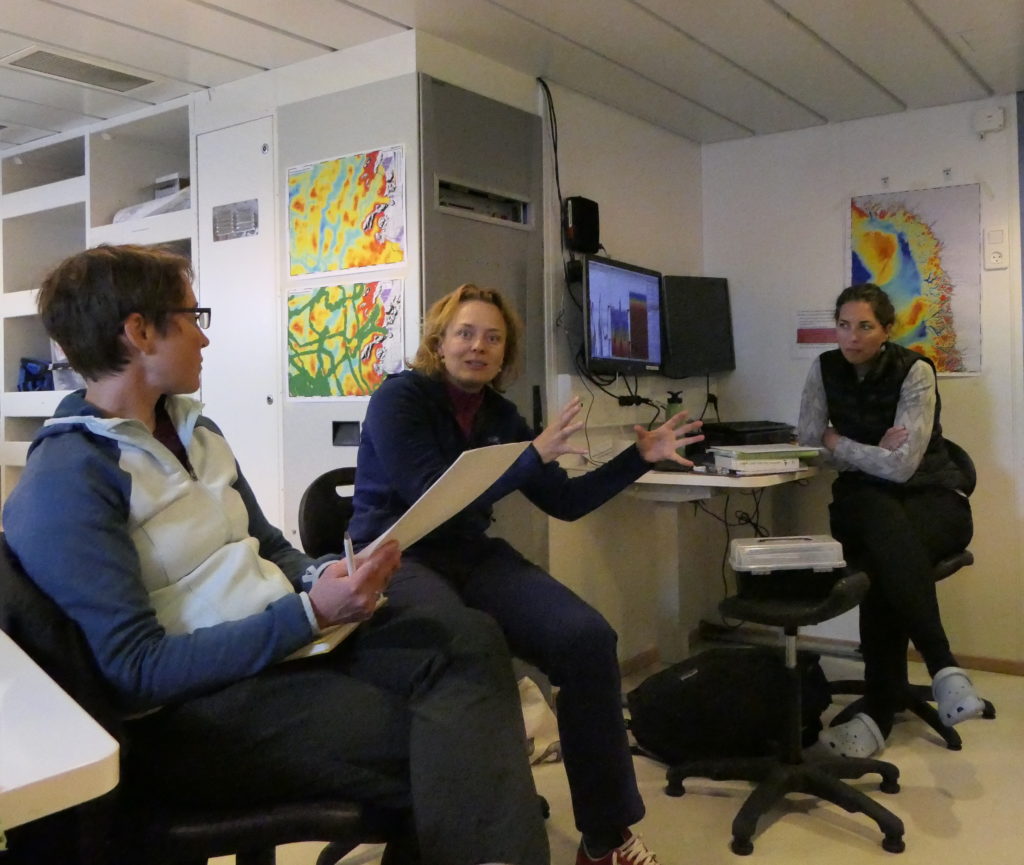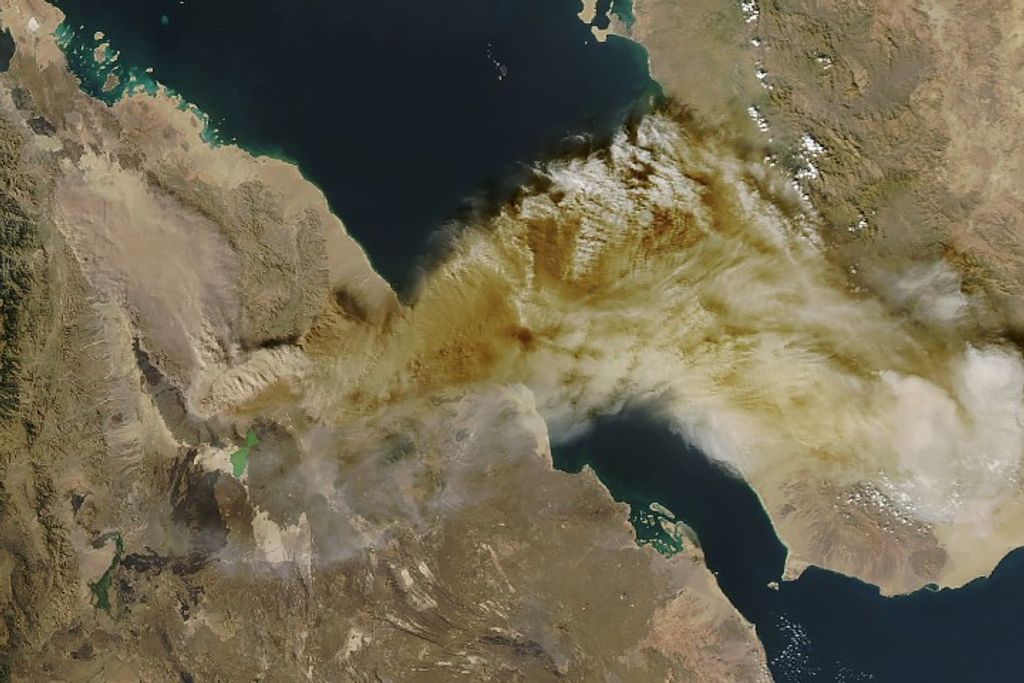On the Iceberg Highway

by Carol Rasmussen / NORTHWEST GREENLAND /
If you remember the movie Titanic, this looks like a terrible place for a cruise. But to a captain with a lifetime of experience navigating around Greenland, it was a safe passage. And to scientist Ian Fenty of NASA’s Jet Propulsion Laboratory in Pasadena, California, it was a great place for research.
Ian is a co-investigator for NASA’s Oceans Melting Greenland (OMG) campaign, a five-year project to measure the effects of ocean water on Greenland’s rapidly melting glaciers. In August, he was the sole OMG representative on a research cruise to glacier fronts in northwest Greenland. And where there are glaciers, there are icebergs.

Through a professional connection with marine biologist Kristin Laidre of the University of Washington, Seattle, Ian had an opportunity to join the Greenland Institute of Natural Resources’ (GINR) week-long research cruise in northwestern Greenland. Malene Juul Simon of GINR’s Climate Division and Laidre planned the trip to deploy underwater acoustic instruments at glacier fronts — an important habitat for narwhals. These long-toothed Arctic whales navigate and hunt by making clicking sounds and listening to the echoes bouncing off nearby rocks or prey. The acoustic instruments pick up the narwhals’ sounds, documenting their activity at the glacier fronts.
The GINR instruments are attached to moorings—lines more than half a mile long, with a half-ton anchor at one end and the instruments and floats attached at intervals to the other end. Ian realized that adding OMG sensors of water temperature and salinity to the lines would produce a unique local dataset for OMG and benefit the narwhal research as well. The scientists agreed to collaborate, and Ian joined the team in Upernavik, Greenland, for an eight-day cruise.
Getting close to glacier fronts means encountering icebergs. Although Greenland’s bergs don’t match Antarctica’s for sheer size, the island’s fjords and shallow waters are littered with everything from modest lumps to tablelands that dwarf the 106-foot-long (32.3-meter-long) Sanna.

“The captain was an expert pilot, with decades of experience in this kind of ship,” Ian said. “It was mesmerizing to watch them navigate through a field of icebergs to get to the instrument sites. His concentration was really impressive.” The crew usually work on fishing trawlers that are at sea for weeks, often in much worse weather than the researchers encountered.
Once at a proposed site, the researchers had to decide whether a mooring could survive there for two years. “There were some places that looked good on paper, but when you got there, you could see that they were on the iceberg highway,” Ian said –meaning a current carrying icebergs from a glacier’s calving front.
An iceberg can not only rip the line off the anchor, it can drag the entire mooring out to sea, anchor and all. One mooring from Southeast Greenland washed up in Scotland, almost 1,500 miles (2,400 kilometers) away.
If the planned site looked dicey, the researchers would look for a nearby spot protected by an island or other feature that was still close to the calving front and deep enough to be attractive to narwhals. When they had agreed on a new site, the researchers programmed their instruments, and the crew tied them on the line.
Then they dropped the whole assembly, surface end first, along a course about a kilometer long. When the anchor dropped, it pulled the line into the proper vertical orientation.
The ocean environment may have been wild, but the ship was civilized. The six researchers and six crew were supplied with wifi, meals to suit both Greenlandic and European tastes, wet and dry labs, and comfortable bunkrooms.
“I have to give a lot of credit to Kristen and Malene for organizing the team,” Ian said. “It was a fantastic experience to work with so many different researchers in related but different areas. Pick any random pair, and they would be explaining something new to each other. The camaraderie was great. We definitely were collectively more than the sum of our parts.”

Ian will return next summer to change batteries on his instruments. The moorings are equipped to help the researchers find them among next summer’s icebergs. “There’s a simple mechanism that sits just above the anchor and listens for a specific tone sequence,” Ian said. “When we come up in the ship, we play that song and boom! It lets go of the line, and the line comes up to the surface. The mooring has a satellite phone, and it sends its current coordinates to us by email.
“I’ll be getting email from my instrument. That’ll be a special day.”




























